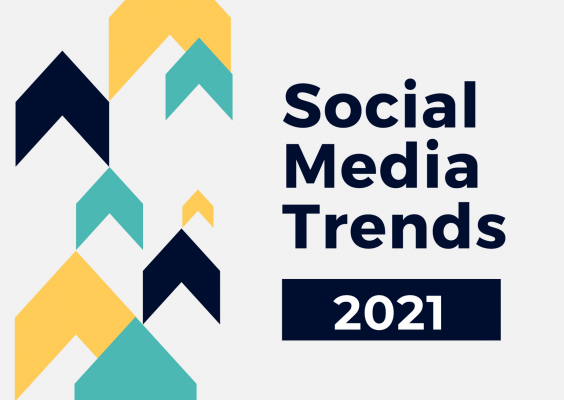2020 threw us for a loop and social media found itself front and center. In a year with a lot of uncertainty and fear, it was more important than ever for digital brands to show empathy, tact, and sensitivity. Digital and social media had (and continues to have) an important role to play to foster connection, inclusion, and health/wellbeing.
While all of that holds true for 2021, below are some trends to be aware of and to try to incorporate into your new year social strategies to foster such connection.
Building a Community
This one sounds obvious, and honestly, should be something to focus on every year. Social media is widely used as a customer service tool, and in times of uncertainty and upheaval, that notion is only reinforced. While it can be challenging to speak to your audiences during challenging times, being present, interacting regularly, and focusing on community building is critical.
“At the very least, [your audience is] spending a lot more time on social media — which means that’s where your brand should be striving to reach them. And, by cultivating meaningful engagement with your audience, this familiarity can bolster brand affinity, brand loyalty, and ultimately, your brand’s survival and success.” (Falcon.io, 2021 Digital Marketing Trends)
It’s also important to note that social and digital media isn’t just for the digital savvy. As Hootsuite notes, the past year has been a tipping point for baby boomers online. There’s been a 66-point increase in baby boomers discovering new brands via social media over the past 4 years, according to GlobalWebIndex, and over a quarter of baby boomers are spending even longer on social platforms now as a result of the pandemic.
While this generation might not be your primary audience, it’s important use segmentation to refine and understand who of this generation might be your target audience. Work this new group into social strategies by targeting them by passion or hobbies to foster their affiliation with your brand. And remember, if you’re targeting an aging generation, be mindful of how their depicted in your creative.
Ephemeral Content
As in 2020, stories and other ephemeral content continued to explode in popularity across social channels. So much so that nearly every social platform has some form of a story available for users to use (we see you Twitter and LinkedIn). An overwhelming 86.6% of users now post stories on Instagram and 70% view stories daily.
Why the hype? Content in the ephemeral space tends to be raw, unfiltered, and more off-the-cuff and overall feels more relatable and authentic to audiences. The content is often quick and fleeting, it doesn’t take up space in main feeds, and with content disappearing after a set amount of time, there tends to be a sense of urgency when audiences interact with the content.
Going Niche
By this point, we’re all pretty well versed in the ‘Big 5’ social platforms, but with the social media landscape changing so rapidly, so do our strategies and our ability to pivot and hop on niche platforms. TikTok exploded in 2020 and has reignited the topic of how to use niche platforms to strategically reach new audiences. “Up-and-coming channels like TikTok can provide opportunities to tap into fresh segments while also harboring a unique culture that allows you to reach your target audience in creative new ways.” (Falcon.io, 2021 Digital marketing Trends)
To that note, it’s also important to recognize when your brand doesn’t align with a platform. Just because it’s new and up-and-coming, doesn’t automatically mean it’s a good fit for your brand. Be mindful of your audience and your goals when deciding whether or not it makes sense to make the leap and hop on a niche platform.
Social Media as Public Relations Tool
It’s easy to identify social media as a marketing tool, but any communications person knows, it’s also a strong ally in the public relations field.
“‘Social Media PR’ goes beyond posting press releases on social networks: it’s a dynamic tool to keep your finger on the pulse of public opinion, learning about your customer’s preferences, and using this information to tailor future initiatives.” (Falcon.io, 2021 Digital marketing Trends)
It’s important to prioritize listening over talking, especially in the time of crisis. And if we learned anything from social listening in 2020, it was that audiences valued ‘normalcy’ and didn’t need (or want) every brand catering to the obvious conversation.
“On average, 32% of key demographics (Gen Z, millennials, Gen X, and baby boomers) say “finding funny or entertaining content” is their main reason for using social media. And data from Morning Consult shows that useful and entertaining ads are most likely to drive purchases, as consumers increasingly crave a return to normalcy.” (Hootsuite, Social Trends 2021)
All this to say, while you work to find your brand’s place in a conversation, know that it’s okay to ‘sit this one out’ if it doesn’t feel right and doesn’t fit with your audience’s connection to and perception of your brand.
